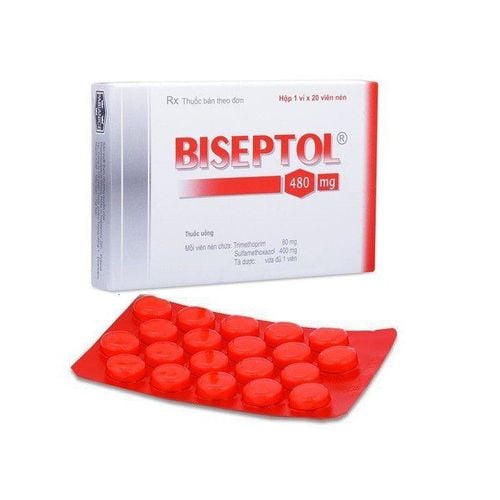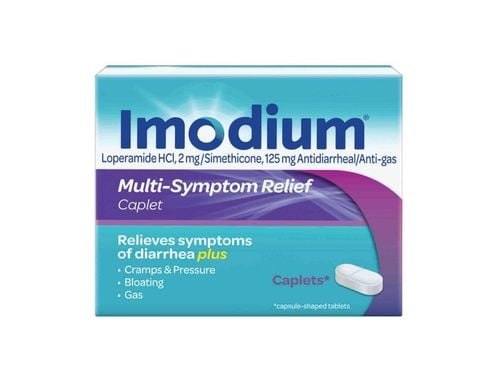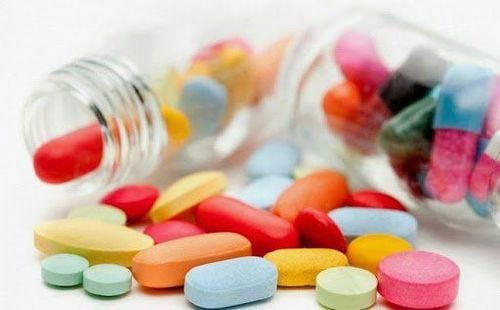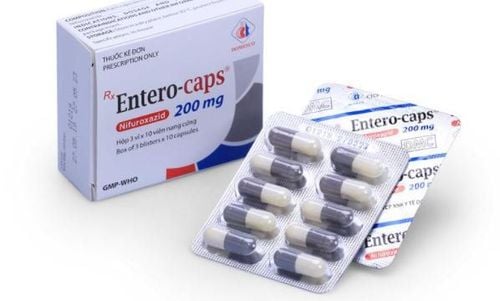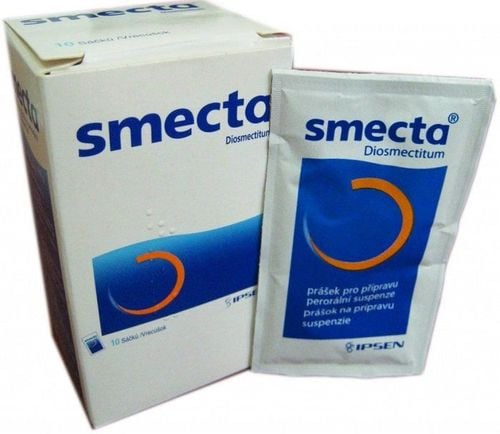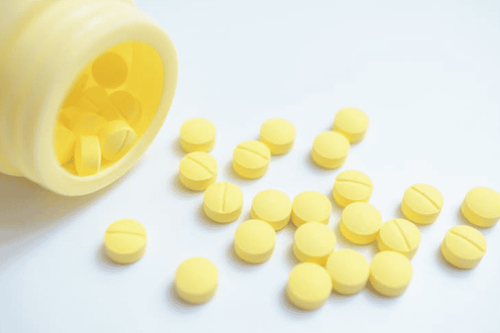This is an automatically translated article.
Loperamide SPM is administered orally and is quick and effective for patients with acute and chronic diarrhea. So what is LoperamideSPM drug? What is LoperamideSPM used for? What is the correct way to drink? What points need to be paid attention to when using? This article will help you better understand the uses of LoperamideSPM.
1. What are the uses of LoperamideSPM?
1.1. What is LoperamideSPM? Loperamide SPM 2mg (ODT) is a very effective supportive treatment for acute and chronic diarrhea. The composition of Loperamide SPM 2mg (ODT) is Loperamide HCl 2mg and excipients just enough.
LoperamideSPM drug is in the form of tablets. Each tablet contains: Loperamide hydrochloride 2 mg and excipients: Lactose, tapioca starch, Magnesium stearate, PVP. K30, Sodium starch glycolate.
Loperamide spm 2mg is packaged in a box of 10 blisters, each blister contains 10 tablets.
1.2. What is LoperamideSPM used for? Loperamidespm 2mg is used for the adjuvant treatment of acute and chronic diarrhea.
Loperamidespm is the first-line treatment in acute diarrhea to prevent or treat dehydration and electrolyte loss, which is especially important for young children or debilitated elderly people. Loperamide is indicated second only to the symptomatic treatment of acute uncomplicated diarrhea in adults or to the reduction of waste volume following an ileostomy or colectomy.
Loperamide has no role in the routine treatment of acute diarrhea in children and it is not considered a substitute for oral rehydration and electrolyte therapy.
Loperamidespm is an antidiarrheal medicine, used to treat the symptoms of acute diarrhea of unknown cause and some chronic diarrhea conditions. This is a synthetic opiate that at normal doses has little effect on the central nervous system.
Loperamide reduces intestinal motility, reduces gastrointestinal secretions, and increases anal sphincter tone. The drug also has the effect of prolonging the transit time through the intestine, increasing the transport of fluids and electrolytes through the intestinal mucosa, thereby reducing the loss of water and electrolytes, reducing the amount of stool. The effect is probably related to decreased acetylcholine and prostaglandin release.
2. How to use LoperamideSPM
2.1. How to take LoperamideSPM Loperamidespm is taken by mouth. Patients should carefully read the instructions for use before starting to take LoperamideSPM and every time they use the drug again. difference. The method of administration and route of administration will depend on whether the drug is in the form of oral or injected drugs, externally or suppository.
Should take the medicine exactly as directed. Do not increase your dose or take it more often than prescribed. The patient's condition will not improve any faster and there is even an increased risk of side effects.
2.2. Dosage of the drug LoperamideSPM Adults: Acute diarrhea: Initially 4 mg, then each loose stool, 2 mg orally, up to 5 days. Usual dose: 6 to 8 mg per day. Maximum dose: 16 mg per day. Chronic diarrhea: Take 4 mg, then each time you have loose stools, take 2 mg until the diarrhea stops. Maintenance dose: Take 4 to 8 mg daily in divided doses (2 times). Maximum: 16 mg per day. Children: Loperamide is not recommended for routine use in children in acute diarrhea. Children under 6 years: Not recommended. Children from 6 to 12 years: Oral 0.08 to 0.24 mg/kg per day divided into 2 or 3 doses. From 6 to 8 years: Take 2 mg, 2 times daily. Children Children from 8 to 12 years old: Take 2 mg, 3 times daily. Maintenance dose: Take 1 mg per 10 kg of body weight, only take after 1 bowel movement. Chronic diarrhea: Dosage has not been determined. Take the dose of Loperamidespm as soon as you remember, if it is almost time for your next dose, skip the missed dose and take the next dose only. Do not take a double dose.
When using Loperamidespm overdose will have the following symptoms: Respiratory and central nervous system depression, abdominal cramps, constipation, gastrointestinal irritation, nausea and vomiting. Overdose usually occurs when the daily dose is about 60 mg loperamide.
Treatment: Gastric lavage, then drink about 100g of activated charcoal through a nasogastric tube. Monitor for signs of CNS depression, if present, give 2 mg naloxone intravenously (0.01 mg/kg for children), may be repeated if necessary, up to a total dose of 10 mg.
3. Contraindications of LoperamideSPM
Contraindications.
Hypersensitivity to loperamide, and some other components of the drug. When patients need to avoid inhibition of intestinal motility. When there is liver damage, either severe colitis or pseudomembranous colitis (which can cause toxic megacolon). Dysentery syndrome, abdominal distention. Drugs that inhibit the central nervous system, phenothiazines, drugs against tricyclic depression may increase the undesirable effects of loperamide. LoperamideSPM should not be used by pregnant women. For women who are breastfeeding, LoperamideSPM can be used, but only in low doses. Note that LoperamideSPM can cause dizziness and headache in some people, so caution should be exercised when driving and operating machinery.
4. Notes when using LoperamideSPM
With caution in patients with reduced liver function or those with ulcerative colitis. Stop taking LoperamideSPM if the patient does not see results within 48 hours of taking the drug. Monitor bowel movements and stool volume, body temperature. Monitor abdominal distension. There are not enough studies in pregnant women. Should not be used by pregnant women. Because loperamide produces very little milk, it can be used in nursing mothers but only in low doses.
5. LoperamideSPM . side effects
Possible side effects when taking LoperamideSPM: Dry mouth, dizziness, or drowsiness, vomiting or stomach pain, irritability, and bloating, constipation, fatigue.
If the person experiences any of the following symptoms, call a specialist immediately: Skin rash, hives, itching, wheezing or feeling short of breath.
Note: Effects on the central nervous system such as drowsiness, depression or coma, are common in children under 6 months of age. Therefore, LoperamideSPM should not be used in the treatment of diarrhea in young children.
Inform the specialist about the unwanted effects encountered when using the drug.
6. How to store LoperamideSPM
Store in a cool, dry place, at a temperature not exceeding 30°C, in the original packaging and protected from light. Keep out of reach of CHILDREN. LoperamideSPM has a shelf life of 36 months from the date of manufacture. LoperamideSPM is a prescription drug, so it should not be used without a prescription from a specialist. Do not use LoperamideSPM medicine beyond the expiry date printed on the blister pack, medicine box, with expired medicine should be discarded and disposed of according to regulations.
Please dial HOTLINE for more information or register for an appointment HERE. Download MyVinmec app to make appointments faster and to manage your bookings easily.




